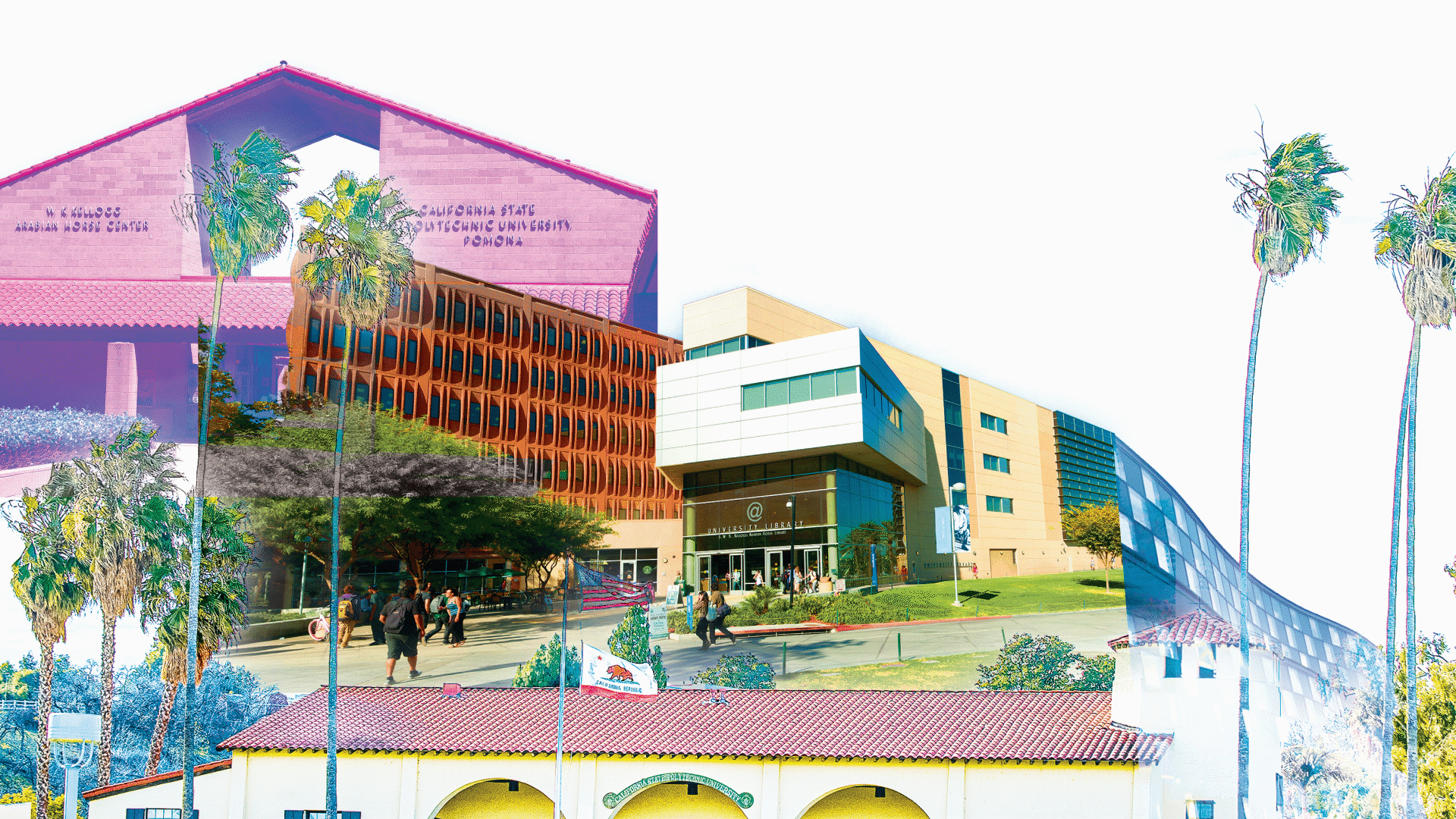Hidden Gems
Cal Poly Pomona is Rich with Programs and Places Focused on Student Growth
By Melanie Johnson
Arabian horses grazing in the pasture at the entrance to the university. Aspiring architects and engineers designing models of future projects they will build. Agriculture and hospitality management students tapping into their talents to grow food for communities and create dining and travel experiences for patrons. Those are some of the things people associate with Cal Poly Pomona.
But beyond what most people know about campus lies many jewels that don’t get as much shine as they should, the hidden gems in the form of academic programs, co-curricular activities and places that contribute greatly to student development and success.
We’re sharing a handful of the less-talked-about programs and places that make our university a one-of-a-kind gem.
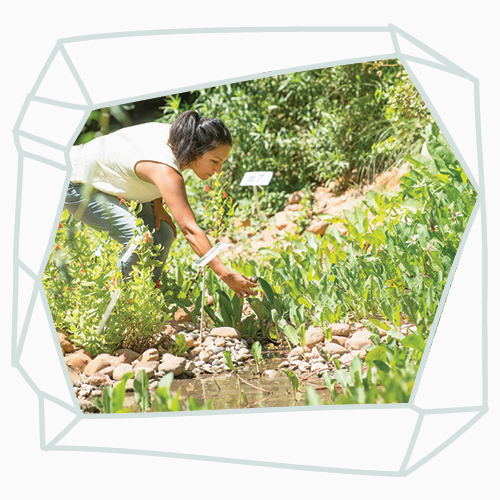
Project Blue
The university is home to several natural resources of water that help keep animals, plants and other organisms alive. Among those sources is Project Blue, the site of a group of springs fed by Kellogg Creek that is located just north of Building 1. In 2018, Cal Poly Pomona established Project Blue to highlight water and its importance, not only on campus, but also throughout California.
Before the restoration project, Kellogg Creek was hard to find because it was covered by overgrown foliage. After non-native plants were removed, the campus destination spot was refreshed with native riparian plants, seating in the form of a learning circle, umbrellas with solar-powered charging stations and a sidewalk for greater access to the site. The living laboratory also provides some great eats and shelter to a variety of birds and insects, and a place for alga, diatoms and other microorganisms to feed. Bees, dragonflies, birds, coyotes and deer are among the creatures that bask in the waters of Project Blue.
Visit the campus map for location and directions to Building 1.
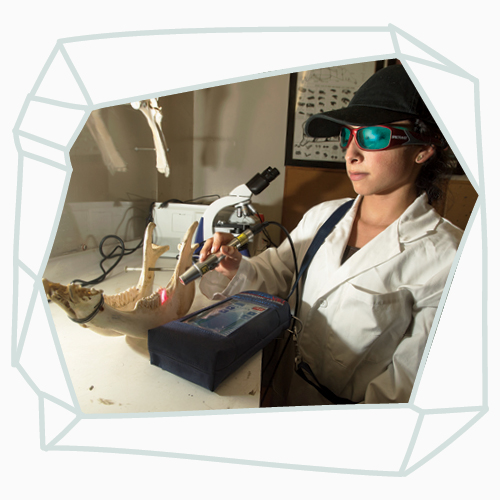
Research Through Inclusive Opportunities
The influence of media on consumers, the potential extension of the shelf life of avocados and the benefit of self-powered solar drones are among the projects in the Research through Inclusive Opportunities (RIO) program. The Office of Undergraduate Research created RIO more than two years ago to provide opportunities for sophomores and incoming transfer students to participate in a research, scholarly or creative project.
RIO is an effort to make sure that first-generation, low-income or underrepresented minority students (whose participation in research is not reflective of their numbers on campus) have the same access as their peers. The program pairs faculty with students, who receive a $2,000 stipend. After working on a year-long project, students present at the annual Research, Scholarship, and Creative Activities Conference in the spring.
“The program gave me a space to be able to put my ideas, aspirations, and drive into a project that I am genuinely passionate about,” says Agatha Brenda Yaghoobi, a 2020-21 RIO scholar studying mechanical engineering. “I have built professional faculty relationships outside of the traditional classroom setting and found my research faculty member to be someone from whom I can truly learn.”
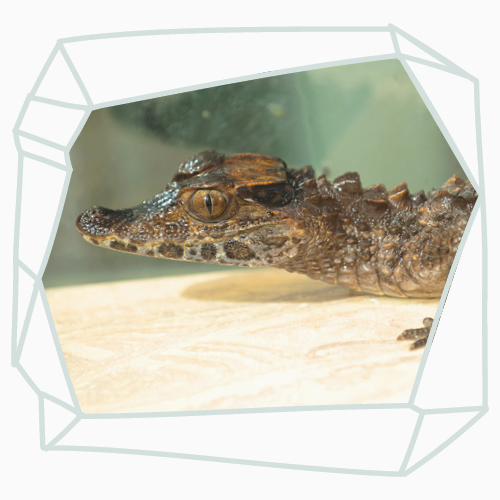
Rainforest Learning Center
Ever wonder what it’s like to visit a tropical rainforest? Cal Poly Pomona gives the campus community a taste of the tropics with its Rainforest Learning Center. The center is part of Rain Bird BioTrek, a facility that includes a greenhouse, gardens and stations that provide interactive, educational opportunities for visitors to learn more about tropical rainforests and their role in supplying the world with oxygen, retaining carbon and influencing worldwide climate patterns.
The 20-year-old Rainforest Learning Center includes more than 200 plant species representing the tropics in the Americas, Africa, southeast Asia, Australia and the Pacific Islands. Some of the plants have economic importance, such as coffee, chocolate and peppers. Others are common houseplants. Thousands of visitors tour BioTrek every year, including K-12 students from local schools.
Visit the campus map for location and directions to Rain Bird BioTrek.
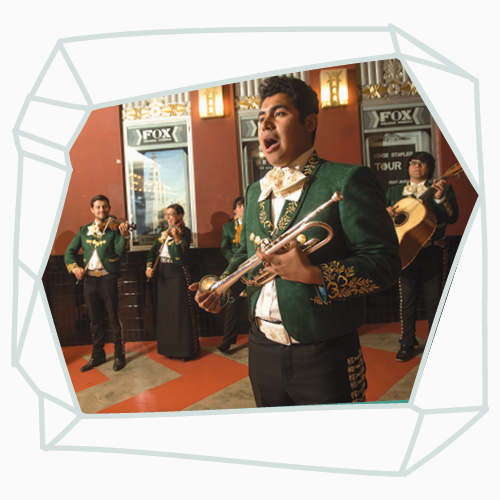
Mariachi Broncos de Pomona
Mariachi officially returned to Cal Poly Pomona in 2016. Close to two decades after the university’s original mariachi group disbanded, Mariachi Los Broncos de Pomona was formed under the direction of ethnomusicologist and Music Professor Jessie Vallejo. The program started with 15 students and was so in demand that a second group for beginning to intermediate students, Mariachi Los Caballeros de Cal Poly Pomona, was created. Both ensembles draw students from diverse majors across campus with a mission to “promote tolerance, respect and solidarity through musical expression and artistry.” The ensembles have performed at campus and community events, and students have participated in masterclasses and workshops led by some of the most renowned mariachi musicians in the world, including Grammy Award winners Jesus “Chuy” Guzman, Juan Jimenez and Ricardo Ramos.
Many of the students who played with Mariachi Los Broncos are still at it. Alumnus Christopher Rubalcava (’17, music industry studies), is a trumpet player and vocalist for the Los Angeles Rams’ Mariachi Rams band.
“Mariachi music has been a part of Cal Poly Pomona for more than 40 years,” Vallejo says, “and ensembles like it offer unique safe spaces for students to be creative and learn about their heritage and the heritage of Southern California.”
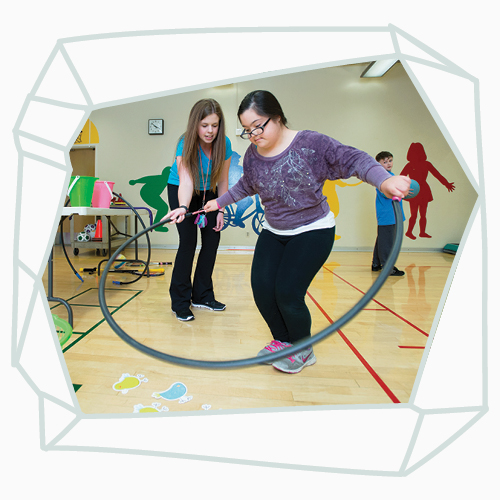
Motor Development Clinic
For many children, riding a bicycle or playing sports is a rite of passage. Children with disabilities wanting to experience those same pleasures may need some extra guidance and support. The Motor Development Clinic has been providing that assistance to members of the community since 1979. The clinic, located in Kellogg Arena, works with children ages 5 to 17, providing them with an individual plan to help them reach their mobility goals.
Kinesiology students, under the supervision of the clinic director and Assistant Professor Mai Narasaki-Jara, develop lesson plans for the participants and families to work with their children at home. The clinic is filled with hula-hoops, balls of various colors and other equipment that foster learning and engagement. During the semester, kinesiology students work with two children at a time. The summer sessions are run more like a sports camp and rely heavily on volunteers.
“You all have given my child not only the ability to kick, to dribble, to tie, to bike, to hit. You have given my child his self-confidence,” says a mother in a testimonial. “You have given him the ability to be included: to belong.”
Visit the campus map for location and directions to Kellogg Arena.
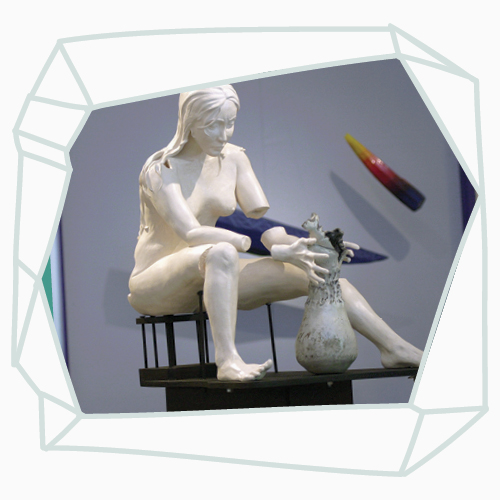
Art Galleries
Just north of the Bronco Student Center, sculptures titled “The Gates” and “Black Marble Columns with Lintel” by the late Italian architect and designer, Ettore Sottsass, beckon passersby to the W. Keith & Janet Kellogg University Art Gallery. The 4,000-square-foot facility not only provides a space for art students to share their work but has featured exhibits from artists outside of the campus community, including international artists. The space also annually hosts “Ink & Clay,” a national juried exhibition celebrating its fifth decade in existence.
Cal Poly Pomona also is home to The Don B. Huntley Gallery, located on the fourth floor of the University Library. The gallery, named for agriculture alumnus and philanthropist Don B. Huntley, often highlights emerging and mid-career artists, the university’s art collections — including Mr. Huntley’s “Art of the West” — art department triennial shows and departmental projects for the College of Environmental Design.
Visit the campus map for location and directions to the W. Keith & Janet Kellogg University Art Gallery.

Turf Management
The grass really is greener for plant science students studying turf management. From Dodger Stadium to the Los Angeles Memorial Coliseum to a Super Bowl, students have applied their knowledge to some of the most important fields in sports. In 1986, the College of Agriculture created the Institute of Irrigation Research and Evaluation to provide a formal method for faculty to work with the irrigation industry. The institute later expanded to include expertise in turf and landscaping, and the name was changed to the Center for Turf, Irrigation, and Landscape Technology.
The center’s research and community outreach efforts are focused on turfgrass, ornamental plant materials, landscape irrigation technology, landscape operations, sport turf and golf course management, and the preservation of natural resources. Ag alumni host field trips for students and connect them to jobs and internships. In 2020, Cal Poly Pomona students won the national Collegiate Turf Bowl Competition, making history by becoming the first West Coast university to win and the first winning team to have female students.
Assistant Professor Priti Saxena, who serves as the team’s head advisor, says securing grants to increase research and graduate degree opportunities for students and networking with turf industry professionals have bolstered the program. “We are creating a workforce and giving students experience, knowledge and skills they can use,” she says. “We’re trying to create students who will be successful in the industry.”

Judicial Internship Course
The next great generation of legal scholars, arbiters of justice or candidates for the judicial bench could be attending Cal Poly Pomona right now. For two decades, students interested in law careers have seen the inner workings of the criminal justice system up close thanks to the judicial internship course.
“The internship provides students with an opportunity to see the courts in action,” says Elli Menounou, an assistant professor of political science who recently completely her first year supervising the course. “Students watch criminal cases, drug-related cases, juvenile court, jury selection, and much more, and they meet judges, district attorneys, public defenders, and other actors of our judicial system.”
The course is available every spring semester, and 19 students participated this past term. The interns typically spend every Monday and Wednesday morning at the Pomona Courthouse observing cases and hearings. The class then meets every other Friday to share their observations and experiences.
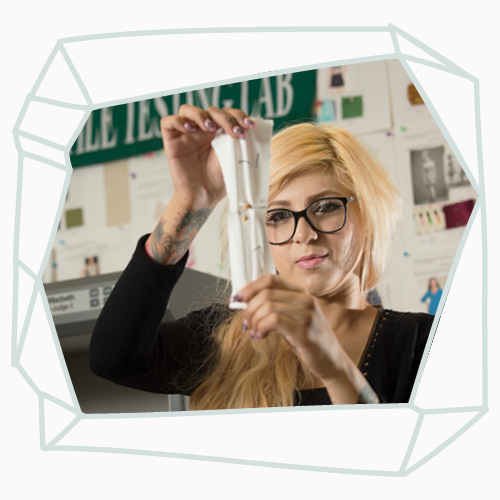
Apparel Merchandising and Management
For more than two decades, the apparel merchandising and management program has been shaping fashion industry leaders. Professors Emeriti Jean Gipe and Betty Tracy teamed up to launch the baccalaureate program in 1995 as home economics programs phased out. Years later, the department added a master’s degree in international apparel management, in which students study global marketing, supply chain management and technological innovation. The program has more than 430 students — the largest in the Huntley College of Agriculture — and is nationally recognized as one of only 13 in the country to earn affiliate status with the prestigious American Apparel & Footwear Association.
Teresa Becker (’07, apparel merchandising and management) had been in the fashion industry since 1978 and was teaching design already when she enrolled at Cal Poly Pomona to earn her bachelor’s degree. She started the clothing company, Heart of Haute, with her daughter, Amanda, while at Cal Poly Pomona. “I had a lot of industry experience and had run a small business prior to coming to Cal Poly Pomona, but through the program, I was given enough business information to make me a stronger businessperson,” she says. “I also learned early, sustainable ways of manufacturing, ethics and took a human resources class that taught about how to hire, benefits and the way to treat your employees.”
Visit the campus map for location and directions to the W. Keith & Janet Kellogg University Art Gallery.
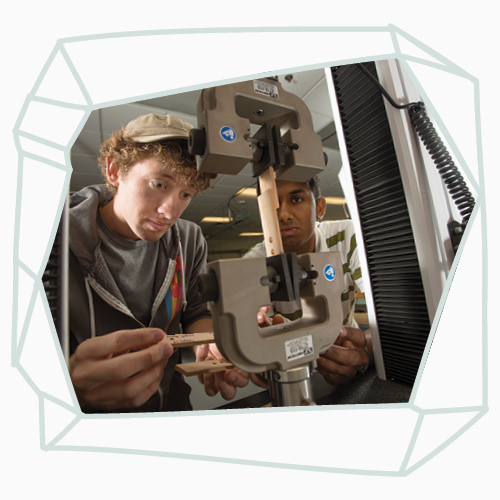
Industrial and Manufacturing Engineering
With a stellar reputation and consistently high national rankings, Cal Poly Pomona’s College of Engineering is renowned. But less talked about is the Department of Industrial and Manufacturing Engineering (IME), which is consistently recognized in national rankings, wins major competitions and produces professionals on the fast track to management. Industrial and manufacturing engineers are tasked with using technology to create and improve systems, processes, and product development methods that are faster, greener and more cost effective.
Manufacturing engineers design, operate and maintain integrated systems and specialized machinery used to produce consumer goods for the masses. Industrial engineers develop approaches and analyze processes to help organizations determine the technology, machinery and personnel needed to improve productivity. They are two sides of the same coin.
“In a manufacturing set up, you cannot find industrial and manufacturing engineers that work independently of each other,” says Chair and Associate Professor Shokoufeh Mirzaei. Both industrial and manufacturing engineers are in high demand, with industries as diverse as hospitals, universities, call centers and plants all requiring their services.
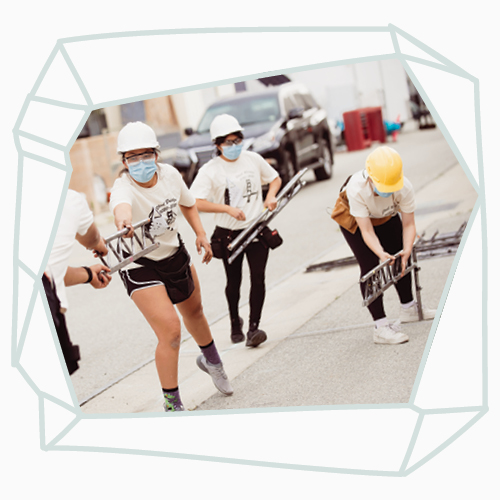
Steel Bridge Team
You know that saying about crossing the bridge when you come to it? Well, for the undergraduate civil engineering students on the Steel Bridge Team, they come to their project daily. For a full academic year, the team plans, designs, fabricates and constructs a one-tenth model steel bridge. At the culmination of the year, they take their talents to a regional competition and compete against other universities. Teams must fabricate their bridge and assemble it while being timed. The bridge must span about 20 feet, carry 2,500 pounds and meet other competition requirements. The judges also factor in aesthetics in the final results.
Cal Poly Pomona teams have excelled in competition. The university placed first overall at the 2021 regionals and fourth overall in the National Student Steel Bridge Competition. This year, the team finished second at regionals, qualifying them for the nationals in May.
Emelisa Vasquez, a senior civil engineering student and the project manager for the Steel Bridge Team, says she enjoys the learn-by-doing aspect and working with like-minded colleagues. “The thing I love most is the people and how very motivated they are to get the project done,” she says. “Learning in that type of environment sits well with me and makes me want to get things done too.”
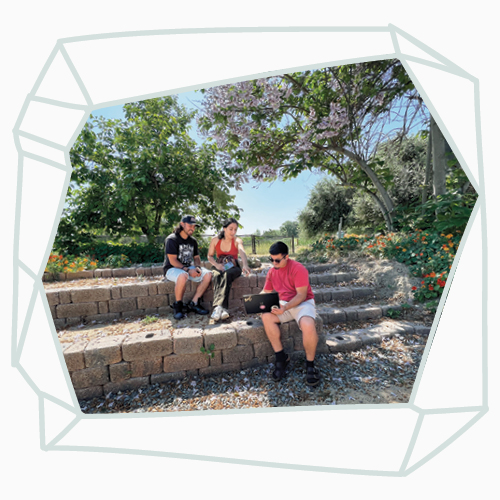
Outdoor Classrooms
Youth often hear the adage, “The world is your oyster”? For Cal Poly Pomona students, the entire campus is their classroom. Outdoor classrooms abound around campus, from the rows of crops at Spadra Farm to the wine grapes of Horsehill Vineyards to the cows, sheep and pigs in Ag Valley. At the W.K. Kellogg Arabian Horse Center, students witness new life coming into the world as part of the Foal Watch Program. In the Engineering Meadow, students conduct surveys of the area and operate autonomous robots. The Mesozoic Learning Center offers lessons in ecological and biological sustainability.
At the Lyle Center for Regenerative Studies, an outdoor classroom completed in 2021 provides creative learning opportunities related to food production. The classroom features a shallow amphitheater-style space located next to the center’s kitchen. The aim is to tap into regenerative agriculture to support food production and nutrition programming at the Lyle Center, provide fresh produce for the campus’ food pantry, and establish a space for student innovators and entrepreneurs to test their ideas.
Visit the campus map for location and directions.
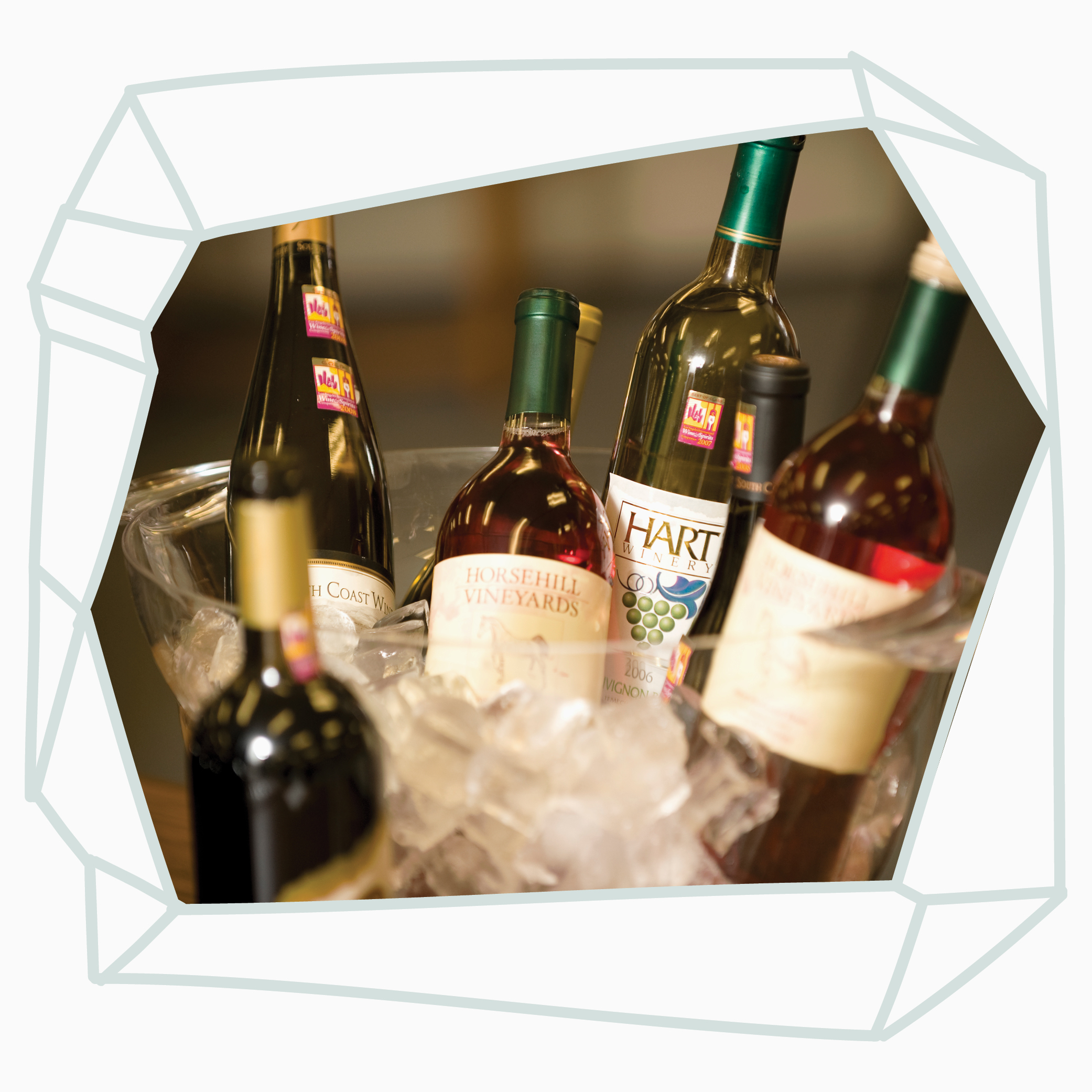
Wine Library
For more than four decades, Cal Poly Pomona students have been learning the finer points of selecting and serving wine and earning a grade while doing so. Classes on wine education and appreciation date back to the 1970s when the hospitality management program was a part of the College of Business. It continued in the 1980s with the creation of the college’s Center for Hospitality Management, and interest steadily grew in the 1990s after The Collins Center of Hospitality Management moved into a new building atop a hill overlooking campus. In 2001, with the leadership of philanthropists, Jim and Carol Collins, two privately-funded buildings were added, one of which featured a 75-seat Wine Auditorium Classroom and a Wine Library.
“Wine was a big thing when this building was built,” says Professor Margie Ferree Jones, who joined the college’s faculty in 1990 and currently teaches the Wines, Beers, and Spirits course. “It’s an important part of the California economy.”
The library, which is temperature and humidity controlled to best preserve the products, holds close to 8,000 bottles. It houses products for The Restaurant at Kellogg Ranch and special events; wine, beer and spirits for Jones’ courses as well as the Beer and Culture courses; and a special collection of wines donated to the university by previous faculty and board members that even includes bottles gifted from television mogul Norman Lear.
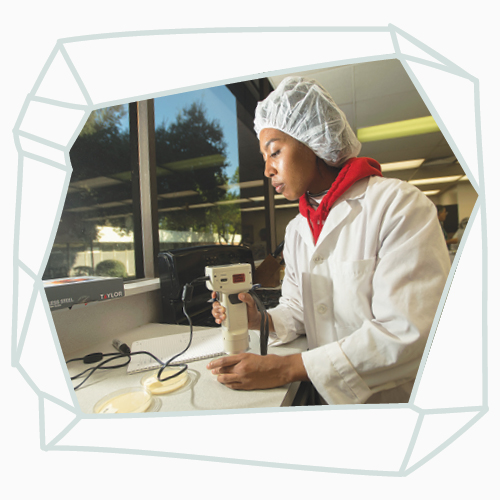
Food and Science Technology
For students literally interested in how the sausage gets made, and also how the flavors are tested, the packaging designed, and the product kept safe for consumers to buy on store shelves, the food science and technology program provides all of that and more.
The program was created in 1999 in response to the Southern California food industry’s growing need for food scientists and technologists. Food scientists study how processing affects food products, the safest and most efficient ways to manufacture food, product development and improvement, and quality assurance at processing facilities.
The program’s stellar reputation prompted the Institute of Food Technologists to name it one of its approved undergraduate programs in 2020, making Cal Poly Pomona the third university in California to earn the prestigious designation. The program also is the only one in Southern California approved by the Research Chefs Association. Students also have put their food science skills to the test, earning prizes in national competitions.

California Center for Ethics and Policy
Since its launch in 2018, the California Center for Ethics and Policy has given students an opportunity to take a deeper look at diverse issues including healthcare access and justice, war and military culture, and the climate crisis. Each year, the program accepts about 10 student fellows for an advanced seminar. Student fellows work with faculty fellows on a semester-long research project, and they also meet ethics and policy experts and present at a student research conference.
Many universities have similar centers, but Cal Poly Pomona’s has a unique focus. “
Part of what sets our Center apart is that we are focusing on national and global challenges but specifically through a Californian lens,” says Philosophy Associate Professor Alex Madva, the center’s director. “How do these issues impact Californians, and on the flip side, what are the opportunities for California to take a leadership role in addressing these problems?”
The program has expanded, hosting grant-funded panels with academic experts, activists, artists, business leaders and writers, launching a podcast and creating Project Mailbox, an effort to enable housing insecure students to have their mail delivered to campus.

Music Industry Studies
The music bug isn’t just for those who play in a band or aspire to be a solo artist. It’s also for those who love the technical aspects of making music: sound engineering, music production and music direction, to name a few. The bachelor’s degree in music industry studies (MIS) prepares students interested in music and entertainment careers, including performing, business and production. In 2019, the Department of Music added the gold standard AMS Neve Genesys G32 audio recording console, providing students with an opportunity to record on the kind of equipment they will encounter in their careers.
“Neve is the Rolls Royce of the audio world,” says Music Professor Arthur Winer. “After the microphone, the console is the vehicle by which audio signal interfaces with both the acoustic and recorded realms.”
Alumni of the program include Catherine Pastrana, a music supervisor at ESPN, Esteban Munoz, a show producer at The Forum, music therapist Kristie Gallacher, recording artist Lacey Johnson and film composer Will Hunt.
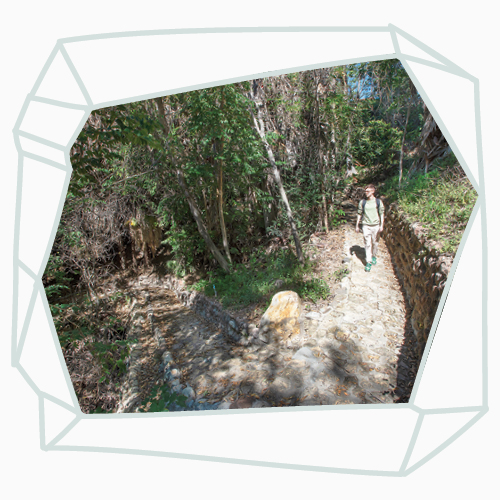
Voorhis Ecological Preserve
The San Jose Hills are alive with wildlife. The 76-acre Voorhis Ecological Preserve, which includes the canyon lands that connect the hills between the Santa Ana and San Gabriel mountains, is home to several species of amphibians, reptiles, mammals and birds including salamanders, rabbits, coyotes and bats. It also contains more than 160 types of plants and an unnumbered species of insects.
The preserve is named after the late H. Jerry Voorhis, a former Congressman who also was the headmaster of the Voorhis School for Boys in San Dimas, which became the site of the university’s original campus before relocating to Pomona. The area remains a natural resource and a living laboratory to study wildlife and plant life.
Visit the campus map for location and directions to Voorhis Ecological Preserve.

TOM
Two words the American public has learned in the wake of the COVID-19 pandemic: supply chain, or the system of getting goods to the consumer.
Cal Poly Pomona’s acclaimed digital supply chain management program features two career tracks. One emphasizes the supply chain network design and analysis, while the e-business track focuses on information technology. The supply chain field is growing, and many new graduates receive offers of more than $80,000 with no full-time experience.
The College of Business Administration plans to offer a new master’s degree in the fall to concentrate on data-driven decision-making using software and automation-related technologies. It will feature an accelerated option and offer evening and weekend classes to accommodate full-time professionals.
“COVID-19 demonstrated the world’s collective reliance on supply chains, but also its vulnerabilities,” says Yuanjie “Ed” He, chair of TOM and EBZ, and the master’s program co-director. “TOM faculty, after consulting with industry leaders long before the pandemic, designed the MS digital supply chain management program, and it is exciting that it is set to launch while the industry has the world’s attention.”
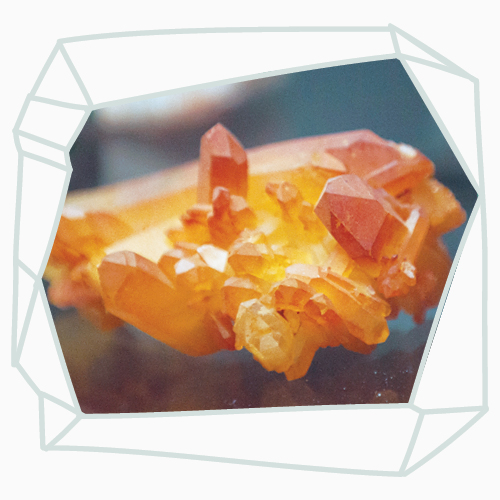
GEM Collection
There are metaphorical gems, and then there are literal gems. The geology collection of precious stones, gems and minerals donated by alumnus Roark Moudy (’62, accounting) qualifies as both. The collection, housed in the College of Science’s Department of Geological Sciences, has around 300 specimens, many on display for campus viewing.
Moudy was inspired by a professor friend to take up rock collecting. Over time, he collected specimens from 28 countries and 20 states; went to gem and mineral shows where armed guards stood watch over silver platters of rubies, diamonds and emeralds; started a business venture that imported geodes from Mexico; and joined the Glendora Gems rock-collecting club.
While downsizing at home, Moudy wanted to find a worthy home for his collection. Cal Poly Pomona was the solid choice, of course.
“I felt like I had an obligation,” he says after donating his collection in 2014. “I felt that Cal Poly (Pomona) had given me a wonderful education. I attribute my success to the education I received.”
Visit the campus map for location and directions to the College of Science.
